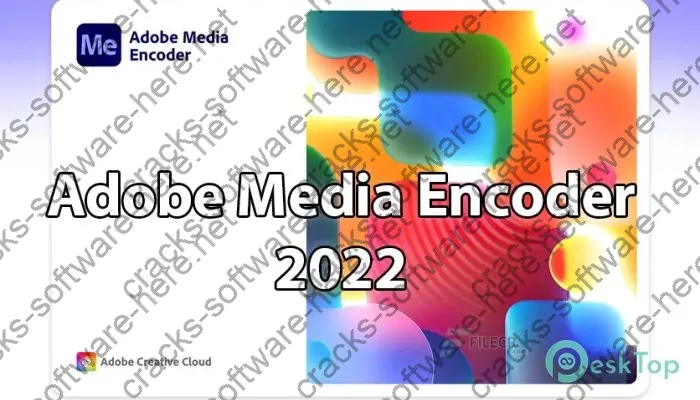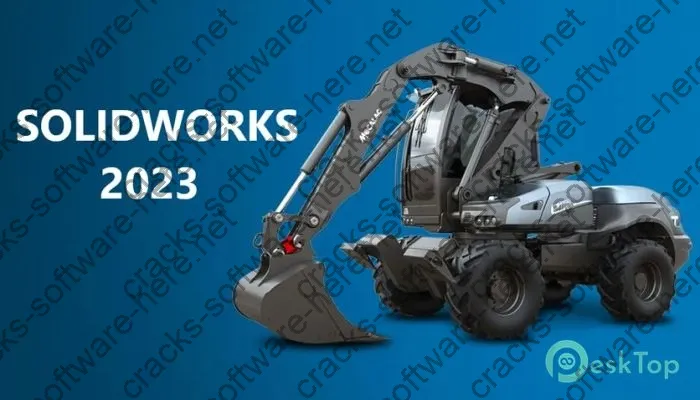Adobe Media Encoder is Adobe’s powerful transcoding application that converts media files from one format to another. The latest release, Adobe Media Encoder 2024 Keygen, introduces improved encoding speeds, expanded format support, a simplified interface, and more robust remote rendering capabilities.
This comprehensive guide will cover everything you need to know about using Adobe Media Encoder 2024 Download free for all your media transcoding needs.
What is Adobe Media Encoder 2024 Keygen?
Adobe Media Encoder Free download is a media transcoding application made by Adobe Systems. It converts or exports media files from one format to another, allowing content creators to publish and distribute their work.
Media Encoder Keygen works alongside other Adobe creative applications like Premiere Pro, After Effects, and Audition. For example, rather than exporting directly from Premiere Pro, editors can send sequences to Media Encoder for transcoding, freeing up Premiere to continue working on a project.
Media Encoder encodes media in various containers like MP4, MOV, and MXF with codecs such as H.264, HEVC, and Apple ProRes. It allows you to easily publish videos for websites like YouTube and Vimeo, television broadcast, Blu-ray and DVD authoring, and more.
What’s New in 2024
The 2024 release of Adobe Media Encoder introduces exciting new capabilities:
Improved Encoding Speeds
Media Encoder 2024 Keygen now leverages GPU and multi-threading technology to significantly improve encoding speeds across the board. You can achieve up to 2x faster H.264 and HEVC encoding compared to previous versions.
Faster encoding means you can get your media exported quicker without compromising quality. Time saved here allows you to move on to other creative tasks.
Enhanced Format Support
2024 now includes the cutting-edge AV1 codec for greater compression efficiency. Compared to H.265, AV1 provides the same quality video at lower bitrates, resulting in smaller file sizes.
The latest camera formats and codecs from ARRI, Blackmagic Design, Canon, and Sony are also now supported so you can start encoding right away without conversions.
Simplified Interface
This release features visual tweaks to streamline the overall encoding workflow. The interface has been cleaned up with more distinct separation between queued items and an easier to navigate preset browser.
Monitoring encoding progress and managing long queues is simpler than ever before.
Expanded Remote Rendering
You can now spread encoding tasks across more machines, servers, and locations to maximize efficiency. This includes tighter integration with Team Projects in Premiere Pro so editors worldwide can export media from the same unified workflow.
The improved Watch Folders feature also lets you designate monitored folders that will automatically encode anything placed within them based on preset specifications.
Encoding Concepts
Before diving into the application, it helps to understand some key encoding concepts.
Codecs
Codecs refer to algorithms used to encode and decode digital media for distribution and playback. They compress media to save space while retaining as much visual quality as possible.
Some common codecs you’ll see in Media Encoder include:
- H.264 – Offers good compression and widespread device support. Used online and for Blu-ray/DVDs.
- HEVC (H.265) – Newer than H.264 with better compression in 4K+ resolutions. Support varies across devices.
- ProRes – Apple professional production codec with larger file sizes but maximal quality retention.
Containers
Containers package compressed audio/video data together into a single file with metadata. Common media containers include:
- MP4 – Most popular container today. Used online and with mobile devices.
- MOV – QuickTime container that works across Apple devices.
- MXF – Container commonly used for broadcast media workflows.
Containers work separately from codecs so you can mix and match them. For example, you may encode H.264 video within an MP4 or MOV container.
Bitrate
Bitrate refers to the amount of data used per second to store and play the video. A higher bitrate means less compression, better quality, but results in larger file sizes.
Finding the optimal balance usually involves determining the minimum bitrate needed for acceptable quality based on your output platform specifications.
Getting Started with Adobe Media Encoder 2024 Keygen
Now that we’ve covered some key concepts, let’s jump into using the Adobe Media Encoder 2024 Keygen application.
System Requirements
Make sure your computer meets the recommended system requirements for smooth performance:
Windows – Intel 6th Gen or newer CPU – 16 GB RAM – 4 GB GPU like NVIDIA GeForce GTX 1050 or AMD Radeon RX 560
MacOS
– Intel 6th Gen or newer CPU
– 16 GB RAM
– 4 GB GPU like AMD Radeon Pro 580
GPU acceleration requires supported hardware and up-to-date drivers.
Installation
You can download and install Media Encoder through the Creative Cloud desktop app or by directly downloading the disk image installer from Adobe.
Make sure to sign into your Adobe ID account which manages the licensing and access to Media Encoder.
Interface Overview
The interface is divided into a few key sections:
- Source Monitor – Preview video files added for encoding.
- Queue – Where encoding tasks are listed and monitored.
- Presets Browser – Built-in and custom encoding presets.
To start, simply import media files through the Menu or by dragging directly into Queue. Next, select encoding presets tailored to your output needs. Finally, hit Start Queue to kick off encoding!
Encoding Presets
The Presets Browser contains many built-in presets optimized for common delivery platforms. For example, select “YouTube 1080p HD” to transcode and deliver media properly configured for the YouTube platform.
You can also save your own custom presets for reusing unique encoding settings tailored to specific needs like target bitrate or codec configurations that work best based on your own testing and preferences. Building and maintaining your own library of custom presets speeds up your workflow.
Advanced Encoding Workflows
While you can perform basic encoding tasks directly within the Media Encoder interface, producers with more complex workflows can leverage the software in creative ways:
Remote Rendering Setups
By integrating Full version crack Media Encoder 2024 with Team Projects in Premiere Pro and After Effects, post-production teams can collaborate across geographically dispersed locations.
Rather than relying on local export, editors and motion designers can directly send timelines and compositions to Media Encoder instances running on remote workstations and servers for distributed processing.
Producers can monitor encoding progress and manage media processing tasks from any location. Shared assets get encoded centrally from the collaborative Team Projects cloud workspace.
Multi-Machine Encoding
Larger production teams can maximize encoding throughput by distributing transcoding tasks across multiple machines, whether a swarm of local workstations or leverage cloud infrastructure.
The watch folder feature also helps automate some of the labor by observing specified folders for any new source media to appear, grabbing the files, and then encoding automatically based on preset deliverable specifications.
Encoding for Different Platforms
Whether you are publishing media for web streaming, television broadcast, Blu-ray authoring, or other distribution channels, Adobe Media Encoder 2024 Keygen has you covered.
Dig into custom settings like resolution, codec support, aspect ratios, frame rates, and more tailored for each unique platform. Test to find the optimal balance of quality and file size for your needs. Compile specialized presets for one-click conversions.
Troubleshooting Common Issues
Like any professional software, you may run into bugs or compatibility issues with certain source formats or export codecs.
Common problems include older camera formats lacking native codec support, errors when trying to export projects above 4K resolution or 60 fps, and system compatibility issues with newer high-efficiency codecs like HEVC or AV1 on outdated machines.
Adobe releases regular updates to Media Encoder addressing stability and expanding format support. Checking forums can also help uncover workarounds for known issues. Staying current and running robust modern hardware ensures the smoothest experience.
Adobe Media Encoder Alternatives
While extremely full-featured, Adobe Media Encoder is certainly not the only transcoding solution available. Some alternatives include:
Handbrake
Handbrake is a popular free and open source encoding tool for converting video files using common codecs like H.264 and MP4 containers. It has less complexity but gets the job done.
Cloud Encoding Services
Services like Amazon’s Elastic Transcoder, Zencoder, and Encoding.com offload encoding tasks to the cloud for fast parallel processing that leverages elastic infrastructure. Useful for handling large batch jobs.
FFmpeg
FFmpeg is a venerable command line utility packed with advanced features for programmatically handling media encoding workflows. It powers backend encoding for many services but has a steep learning curve.
FAQs
What are the biggest differences when upgrading from older Media Encoder versions?
The 2024 release dramatically speeds up encoding through GPU and multi-threading support. It also expands format coverage and remote working capabilities crucial for modern post-production environments.
What source formats does Media Encoder support?
It supports just about any common media acquisition format from DSLRs, mirrorless cameras, camcorders, or high-end cinema cameras from Canon, Sony, Nikon, Panasonic, Blackmagic and others.
Does my computer need specialized hardware for encoding?
Having a supported GPU provides a major speed boost but a higher core count CPU can get the job done on simpler videos. Optimized media from Premiere Pro also takes some of the load off local systems.
What are the most popular export presets and codecs?
H.264 or HEVC within an MP4 container covers most online delivery needs on sites like YouTube and Vimeo in resolutions up to 4K. Higher quality codecs like ProRes and DNxHR are used for further post-production or broadcast programming.



